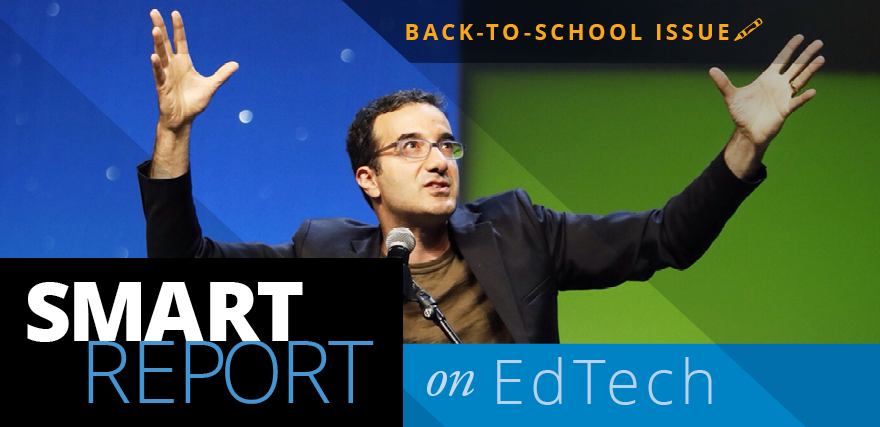Student-centered learning helps students break cycles of learned helplessness and sets the stage for real learning to happen, said Katherine Goyette, educational technology and integrated studies consultant for the Tulare County Office of Education in central California.
Goyette discussed the value of student-centered learning with teachers during her “Averting Disaster: Full STEAM Ahead” workshop at a CUE Rock Star Camp in Oxnard, Calif. I caught up with her to talk about the components of a successful student-centered classroom and the steps teachers can take to get there. The following text has been edited for clarity and space.
What is the benefit of student-centered learning?
We want to create environments that foster lifelong learning and promote inquiry. Student-centered learning focuses not on a grade but on the joy of learning itself.
How do we foster curiosity in the classroom?
We start by modeling curiosity ourselves. We must show students what causes us to wonder. We must admit that we do not have all the answers — that we ourselves are always learning.
The Next Generation Science Standards tell us to begin lessons with an “engage activity,” wherein students watch a phenomenon, either via video or real-life experiment. This helps promote curiosity and gives students a reason to research, hypothesize, create a model and change variables to test and learn by doing.
Educators were once taught to front-load vocabulary — to tell students what it is they would be learning. We must now flip this traditional model and instead encourage students to first wonder and then explore. This wonder and exploration will naturally lead to learning.
How do we help students ask questions?
Again, we model this ourselves. When students ask me a question, I answer with another question or an “I wonder” statement, such as, “I wonder if there is a website or app that can help you find the answer to your question …”
We must focus on wonder rather than grades. Students need to see our classrooms as a place to learn, not to regurgitate facts.
Why is it important that teachers make this language shift?
When we answer a question with another question or an “I wonder” statement, we honor student curiosity and validate learning rather than knowing. We create an environment that shows we value the process of learning rather than the attainment of knowledge. Information is available at the touch of a button (just ask Google or Siri!). We have to teach students to move past facts and to think critically — to prepare for a future that is unknown by communicating, collaborating and creating.
What is one step teachers new to this model can take this year?
Give students voice and choice. Ask students how they would like to demonstrate understanding of the content. This goes deeper than a “choice board,” in which students are given options. Rather, ask students how they like to learn things outside the classroom. Do they use the internet to figure out how to advance in a video game? If so, suggest they create a website. Do they use YouTube to learn new dance moves? If so, encourage them to create a video. And here’s the secret: Teachers do not need to know how to create a website or make a YouTube video. Students who are motivated to share their learning in this way will often spend the time to learn this method themselves. These students can then become experts who teach their peers.
How do we keep students on track for learning targets?
Even in a student-led learning environment, teachers have an important role. They need to ask guiding questions to ensure students are meeting learning targets in a timely fashion and lead students to additional resources as needed. They need to facilitate systematic collaboration that fosters peer feedback. Teachers can help identify student “experts” and give them opportunity to work with their peers. Students get to learn from one another.
Teachers are similar to a coach; their role is to identify the strengths of each player and maximize individual and collective potential. They must be observant and focus on building a collaborative culture that values each member of the classroom for the contribution he or she brings to the group.
Need more? Connect with Katherine on Twitter, or visit her website for more tools and tricks. CUE Rock Star camps take place throughout California. Check here to find one near you.
Kanoe Namahoe is the editor for SmartBrief on EdTech and SmartBrief on Workforce.
___________________________________
Like this article? Read more like it in the full issue of SmartBrief’s back-to-school guide, SmartReport on EdTech. Want to get news like this in your inbox? Check out all of SmartBrief’s education newsletters, covering career and technical education, educational leadership, math education and more.
